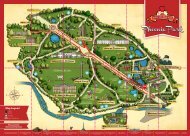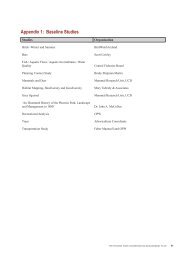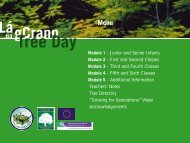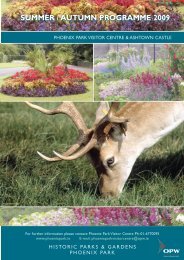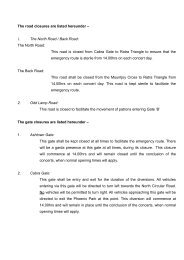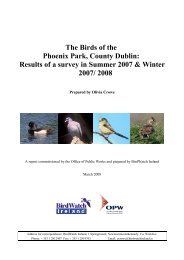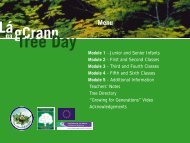Worksheets for 5th & 6th Class - Phoenix Park
Worksheets for 5th & 6th Class - Phoenix Park
Worksheets for 5th & 6th Class - Phoenix Park
You also want an ePaper? Increase the reach of your titles
YUMPU automatically turns print PDFs into web optimized ePapers that Google loves.
Pollination<br />
Trees must produce flowers in spring so that they can make<br />
seeds in autumn.<br />
Flowers contain pollen which is a very fine powder.<br />
Pollen must be transferred from the male part of one flower to<br />
the female part of another flower so that seeds can <strong>for</strong>m.<br />
Types of flowers<br />
There are two types of flowers: blossoms (flowers with petals) and catkins.<br />
Horse Chestnut<br />
Hawthorn<br />
Blossoms<br />
Blossoms attract insects such as bees and butterflies which visit<br />
these flowers to collect nectar (flower juice). While doing this<br />
they become dusted with pollen.<br />
When they move on, the pollen they<br />
have picked up from one flower rubs<br />
off on the next flower. In this way, bees<br />
are very important in helping new seeds<br />
to develop and grow.<br />
Horse chestnut, cherry, hawthorn, apple and mountain ash<br />
trees have flowers which are pollinated by insects.<br />
Catkins<br />
Some trees use the wind to blow pollen from one flower<br />
to flower. Some trees have long catkins. As the catkins<br />
shake in the wind, the pollen is blown from tree to tree.<br />
Bee on<br />
Hawthorn<br />
These trees don’t need blossoms.<br />
Instead, their flowers are long<br />
catkins which are easily shaken<br />
by the wind.<br />
Hazel<br />
Oak<br />
Hazel, birch, alder and oak<br />
trees have catkins.<br />
Trees –Module Four – Worksheet 10




